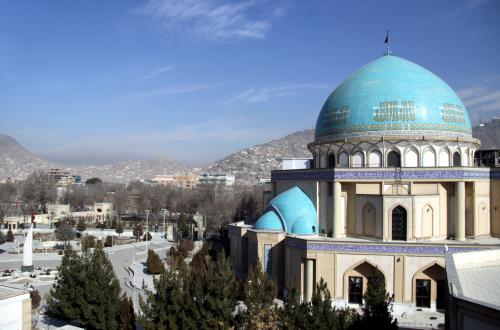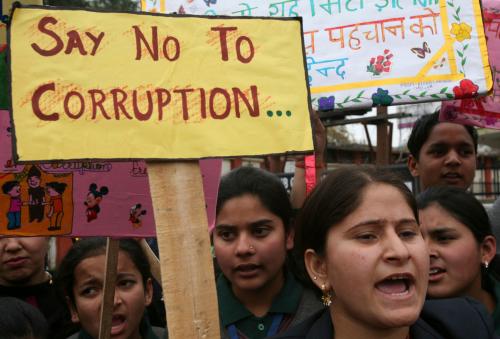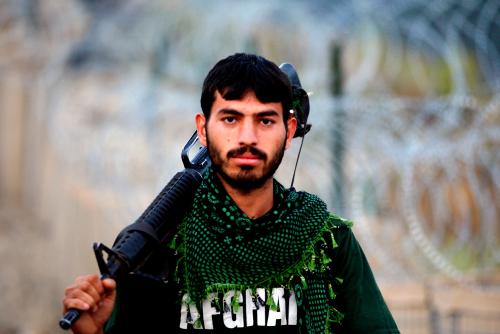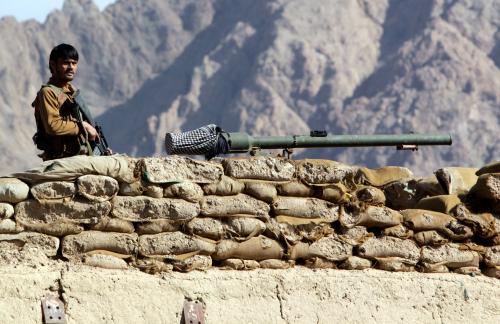The U.S. Agency for International Development (USAID) has under review a draft revision of its 2012 resilience policy for fragile and conflict environments. As reported in the OECD’s “States of Fragility 2022,” fragility has been rising in recent years and is present across a diversity of country contexts. Of the 60 countries identified as fragile, 23 are low-income, and 33 are middle-income. Approximately half of the more than 100 countries in which USAID operates are on the list, highlighting that resilience should be at the core of the agency’s operating procedures.
Principles of resilience
The draft policy sets out seven principles for resilience:
| Use evidence and analysis | Employ cross-sectoral approaches |
| Operationalize humanitarian-development-peace | Strengthen systems for resilience |
| Practice adaptive management | Enable local agency and ownership |
| Ensure equity and inclusion |
These seven principles represent not just good practice for building resilience, but good practice for development. It is noteworthy that one of those principles puts USAID in sync with the OECD’s 2022 report on fragility, the theme of which is bringing coherence to the humanitarian-development-peace complex.
There are a handful of topics that deserve further elaboration in the draft, but one rises to the level of being an eighth principle—donor coordination and collaboration.
Donor Coordination: The draft includes references to coordination, but principally to coordination among U.S. government agencies and with local partners. This coordination is important, but equally critical is coherence among donor policies and programs. The United States cannot advance development globally or in a country acting alone. The alternative—coordination among donors—needs to be at the center of donor efforts. Without question, donor coordination is easier to commit to than to execute, as each donor has its own priorities and complexity of operating procedures and requirements. But there are mechanisms for overcoming those difficulties: construct donor programs around a recipient country’s development strategy (as happens with education through the Global Partnership); collaborate around a country-led platform, as recommended in the seminal USIP report “Preventing Extremism in Fragile States“; put funding in another donor program that is working well (as UK Aid is doing with the USAID-funded TAPAS e-procurement program in Ukraine).
As the largest contributor of ODA, the U.S. can lead by example in donor coordination on account of the impact it can have by the way it operates. For example, over a 20-year period in Afghanistan, the U.S. contributed to multi-donor trust funds like the Afghanistan Reconstruction Trust Fund (ARTF). The ARTF, administered by the World Bank, implemented the largest national programs on health, education, and community development. ARTF’s role was crucial in providing budget support to the government and instrumental in building systems, one of the principles of resilience policy. The U.S. participation in the fund helped keep donor priorities in line with those of the ARTF. Such platforms are especially critical in fragile environments and during periods of political and economic shocks where domestic structures fail to coordinate donor efforts.
However, lessons learned from past experiences and the implementation of frameworks such as the “New Deal for Engagement in Fragile States” advocated by g7+ countries highlight the challenges of donor coordination. For Afghanistan (a member of g7+), aligning international development cooperation with government priorities, ownership, and achieving effective aid delivery was an ongoing concern. Despite international commitments to align ODA with government programs, according to a donor cooperation report by the Afghan government, the actual practice fell short, resulting in a financial gap in delivering government priorities. There was a lack of consensus as to what alignment with government priorities meant, leaving discretion to individual donors and sometimes the priorities of their constituencies. These challenges underscore the need for continued efforts to improve coordination and alignment between donors and recipient countries in order to achieve the goals of development cooperation and to move from statements to actual measurable practices.
Topics deserving further elaboration
Trust: The draft should provide greater attention to the triad of trust, politics, and social dynamics in a country. The lack of trust by the citizens of a country in the government and institutions is more often than not at the core of fragility. Fragility reflects a breakdown in the social contract between a people and the government, which, to be rebuilt, requires government leaders and agencies to listen and respond to the grievances and hopes of citizens. Too often donors design programs that are technically proficient but irrelevant or even counterproductive because they ignore the political and social contexts in a country.
Without a doubt, this was likely a core problem with much of the billions of assistance that donors poured into attempting to bring stability to Afghanistan. The Ministry of Finance data in 2018 showed that only 33 percent of total grants to Afghanistan were on-budget. This created a relationship gap between national and local authorities, and between government and citizens, in the delivery of services and so failed to strengthen trust by means of the social contract between people and government.
Risk: Donors must take greater risks and be more innovative. In fragile environments, donors are operating in an “unknown environment complicated by unexpected changes”—due to the difficulty in comprehending the underlying political and social foundations of a country and the frequently altering dynamics. Change is difficult and complicated in fragile environments and requires donors to take steps beyond the “true and tested” approaches or just work with new partners. The draft policy appropriately raises adaptability to the level of a key principle, as donor programs must tack with changing circumstances and move with agility away from efforts failing to produce results.
Sustained engagement: Building resilience and stability requires going beyond the typical donor timeframe of two-to-five years. It is a 20-25-50-year process requiring sustained, focused engagement. Progress is never linear and requires sustained donor support over the long haul. The predictability of external support is crucial for long-term development planning. Case in point: unpredictable resources limited Afghanistan’s ability to create multi-year programs and budgets. Donors would make four-year funding commitments, but yearly obligations often failed to fulfill those commitments and ignored Afghanistan’s budget cycle.
Managing partnerships: The draft policy does not address a key challenge in fragile environments—how to engage and how to manage relations with partners who may be unstable, have questionable commitment to reform, and in whom the donor does not have full confidence.
Private sector: Consistent with the World Bank’s “Strategy for Fragility, Conflict, and Violence 2020-2025,” which posits that “the private sector lies at the center of sustainable development model in fragile-conflict-violence settings,” the draft policy asserts that local and international business can play an important role in the transition to economic growth and stability. But the draft policy does not explain USAID’s specific role, and how it can help lay the groundwork for private sector investment. This requires work at the macroeconomic level and in building supportive systems, and at the transaction level. This is an arena in which collaboration is essential. USAID needs to join its resource and capabilities with those of other agencies, specifically the DFC, that are engaged in mobilizing development finance.
Small-to-scale: As articulated in the 2018 “Stabilization Assistance Review,” projects should start small, essentially in a test phase, and be scaled up only upon proof-of-concept. This approach applies in any development context (not just in fragile environments), requires ongoing feedback and adaptive management, and is best understood in the roadmap provided by Ann Mei Chang in “Lean Impact.”
Flexibility and innovation: Service delivery and locally-led development require innovative approaches in conflict environments. The Community Development Councils (CDCs) in Afghanistan are a successful example of how service delivery through locally-led platforms can build trust between people and government for 18 years. Studies show that CDCs have been more efficient in delivering emergency response, operating in areas under the Taliban control during the republic; as well as provision of basic infrastructure at a lower cost and up to international benchmarks. The CDCs were capacitated and coordinated by the government to ensure ownership and efficiency. While monitoring of education and health services has been successful, delivery of agriculture programs proved challenging.
From projects to programs: The U.S. and the Afghan government launched a unique effort to review the U.S. civilian assistance in Afghanistan. It was a major step in information sharing with the host country about the nature of off-budget assistance. A major finding from the government side was that a shift from projects (the U.S. was administering 155 projects) to programs was needed to achieve development goals and improve efficiency and coordination.
Conclusion
The need for greater resilience is present in all countries—those that are extremely poor, emerging countries, and even wealthy nations. But the need varies depending on contexts that are specific to each country. The policies laid out in the draft resilience update represent best practices and need only minor additions and elaboration. Whatever the details of the final policy, resilience should drive USAID’s programs in all countries and serve to inform the policies and programs of other U.S. government agencies and other donors.








Commentary
Resilience must drive USAID’s programs—Illustrations from Afghanistan
February 14, 2023